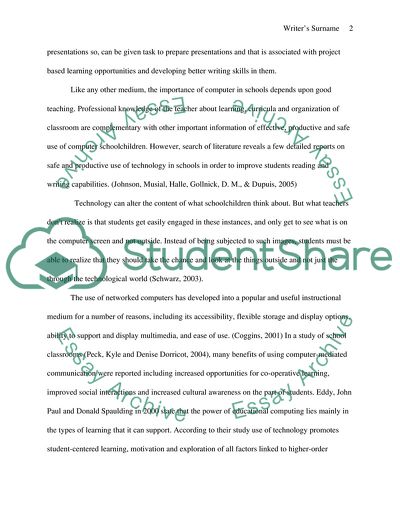Cite this document
(Technology As The Primary Tool In Elementary Classrooms Research Paper, n.d.)
Technology As The Primary Tool In Elementary Classrooms Research Paper. https://studentshare.org/education/1722685-how-can-technology-be-use-in-the-classroom-to-enhance-reding-and-writing
Technology As The Primary Tool In Elementary Classrooms Research Paper. https://studentshare.org/education/1722685-how-can-technology-be-use-in-the-classroom-to-enhance-reding-and-writing
(Technology As The Primary Tool In Elementary Classrooms Research Paper)
Technology As The Primary Tool In Elementary Classrooms Research Paper. https://studentshare.org/education/1722685-how-can-technology-be-use-in-the-classroom-to-enhance-reding-and-writing.
Technology As The Primary Tool In Elementary Classrooms Research Paper. https://studentshare.org/education/1722685-how-can-technology-be-use-in-the-classroom-to-enhance-reding-and-writing.
“Technology As The Primary Tool In Elementary Classrooms Research Paper”. https://studentshare.org/education/1722685-how-can-technology-be-use-in-the-classroom-to-enhance-reding-and-writing.


